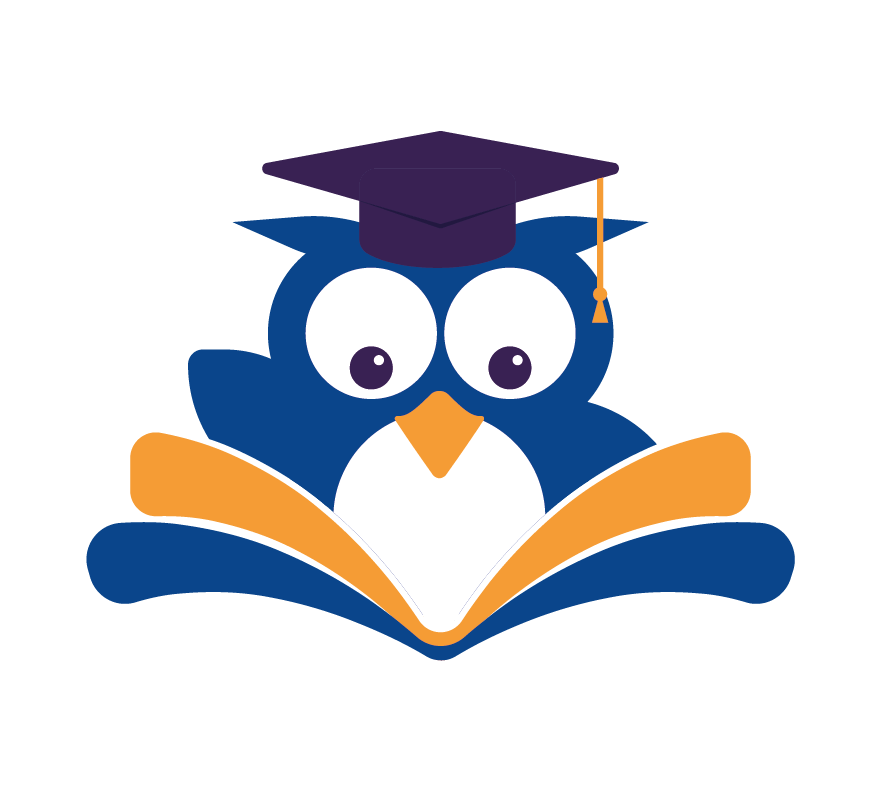Learning is a lifelong journey that can spark our minds and open our eyes to new things. It can change our lives in big ways. But for many, learning might bring back memories of boring lectures and dry textbooks.
Imagine being passionate about learning, where finding out new things is thrilling! When we embrace this passion, we start to see the world in a new light. We gain new skills and ways of understanding things. “Learning new skills often goes hand-in-hand with problem-solving,” making it a valuable tool in various aspects of life.
As we dive into the idea of being addicted to learning, we’ll see how it can change your life. It makes learning fun and useful. You can develop a mindset that looks for new challenges and growth opportunities.
Key Takeaways
- Embracing a passion for learning can revolutionize your life.
- Learning is a lifelong journey that broadens your perspectives.
- Cultivating a love for knowledge can lead to new experiences and skills.
- Effective learning is closely tied to problem-solving abilities.
- Making learning enjoyable is key to sustaining a passion for knowledge.
The Transformative Power of Continuous Learning
Continuous learning can change your brain and open new doors. By always learning, we not only gain new knowledge. We also improve how we learn and adapt.
How Learning Physically Reshapes Your Brain
Learning is more than just thinking; it changes our brain. The idea of neuroplasticity shows our brain can change with our experiences and learning.
Neuroplasticity and Cognitive Benefits
Neuroplasticity lets our brain make new connections. This boosts our memory, problem-solving, and creativity. As we keep learning, our brain gets better at adapting and changing.
Being a lifelong learner gives you an edge in life and work. By always updating your skills, you stay current and flexible in a fast-changing world.
The Competitive Advantage of Being Knowledge-Hungry
In today’s fast world, quick learning is key. Lifelong learners can grab new chances and handle challenges better.
Success Stories of Lifelong Learners
| Name | Field | Learning Achievement |
|---|---|---|
| Elon Musk | Technology and Space Exploration | Self-taught in programming and economics, leading to innovative ventures |
| Malala Yousafzai | Education and Activism | Continued education despite adversity, becoming a global advocate for girls’ education |
| Richard Feynman | Physics | Known for his ability to learn and explain complex concepts simply, contributing significantly to quantum mechanics |
These people show how continuous learning can lead to success and make a difference.
Discovering Your Unique Learning Style
Understanding your learning style is like finding your superpower. It makes learning more fun and effective. We all learn in our own special ways.
The VARK Model: Visual, Auditory, Reading/Writing, and Kinesthetic
The VARK model helps us understand different learning styles. It groups learners into four main types: Visual, Auditory, Reading/Writing, and Kinesthetic.
- Visual learners like images, diagrams, and videos.
- Auditory learners do well with lectures and discussions.
- Reading/Writing learners enjoy text and writing down info.
- Kinesthetic learners learn best through hands-on activities.
Practical Tests to Identify Your Primary Learning Style
To find out your primary learning style, try online quizzes or assessments. These tests ask about your learning preferences.
| Learning Style | Preferred Learning Methods |
|---|---|
| Visual | Diagrams, charts, videos, infographics |
| Auditory | Lectures, discussions, audiobooks, podcasts |
| Reading/Writing | Textbooks, articles, writing summaries, note-taking |
| Kinesthetic | Hands-on activities, experiments, practical exercises, role-playing |
Adapting Learning Materials to Your Style
After finding your learning style, adjust your study materials. For example, visual learners can use diagrams and infographics to grasp complex ideas.
Creating a Personal Learning Roadmap
Let’s plan your path for continuous learning. This is the first step to make learning a lifelong habit.
Setting SMART Learning Goals
To begin, set SMART (Specific, Measurable, Achievable, Relevant, and Time-bound) learning goals. Define what you want to learn, why it matters, and when you’ll do it. For instance, instead of saying “I want to learn Spanish,” aim for “I will hold a 30-minute Spanish conversation by the end of 12 weeks.”
Balancing Breadth and Depth in Knowledge Pursuit
It’s key to balance exploring new subjects with diving deep into your interests. A wide knowledge base offers context and connections. Meanwhile, focusing on a specific area boosts your skills. Allocate your learning time wisely between new topics and mastering existing ones.
Scheduling Learning Milestones
Divide your long-term goals into smaller, achievable milestones. You might spend 30 minutes daily or one day a week on deep study. Use a planner, app, or calendar to schedule these milestones and monitor your progress.
- Set specific learning objectives
- Create a timeline for achieving these objectives
- Regularly review and adjust your roadmap as needed
By following these steps, you’ll be well on your way to becoming addicted to learning and achieving your educational goals.
How to Become Addicted to Learning
Discovering the secret to loving learning is simple: make it fun and engaging. When you enjoy learning, you’ll want to keep doing it.
Understanding the Psychology of Learning Motivation
What drives us to learn? It’s our personal interest, curiosity, and the need to achieve. Knowing these can help you learn better.
Triggering the Dopamine Response to Learning Activities
To enjoy learning, tap into the dopamine response. Dopamine makes us feel good. Using games in learning, like Duolingo, can make it rewarding. Getting points or badges for learning can really motivate you.
Building Positive Learning Habits That Stick
Consistency is crucial for loving learning. Make learning a part of your daily life. This way, you’ll build lasting habits.
The 21-Day Learning Habit Formation Strategy
Try learning something new every day for 21 days. This can make it a habit. Here’s how to do it:
- Choose a time each day for learning.
- Begin with small, easy-to-handle learning tasks.
- Keep track of your progress to stay motivated.
| Day | Learning Activity | Duration |
|---|---|---|
| 1-5 | Language learning app | 15 minutes |
| 6-15 | Online course | 30 minutes |
| 16-21 | Reading a book | 45 minutes |
By sticking to this plan, you can turn learning into a lifelong passion. It will make your life richer.
Overcoming Learning Obstacles and Resistance
The journey to knowledge is not always easy. Learning how to deal with obstacles is crucial. As we work on improving ourselves, we face barriers that slow us down.
Identifying Your Personal Learning Barriers
Knowing what stops you is the first step to moving past it. It could be lack of motivation, trouble understanding some ideas, or distractions. Finding out what holds you back is essential.
Reflect on your learning process: Understand what works for you and what doesn’t. Are you better at seeing, hearing, or doing things? Knowing your learning style helps you study better.
Strategies for Pushing Through Learning Plateaus
Plateaus in learning can be tough, but you can get through them. Changing how you learn can help. For example, if you’re learning a new language, try different methods like podcasts, videos, or apps.
“Learning becomes more meaningful when we can see its real-world applications.”
This method keeps learning fun and helps you remember more.
Transforming Learning Frustration into Curiosity
When you get frustrated, it’s tempting to stop. But, education enthusiasts use curiosity to their advantage. Ask questions, look for new challenges, and dive into different parts of the subject.
This way, you turn frustration into curiosity. It makes learning more fun and fulfilling.
Curating High-Quality Learning Resources
If you love to learn, you’re always searching for top-notch learning resources. With so many choices, finding the best ones can be both fun and challenging.
Digital Learning Platforms Worth Your Time
Digital learning has changed how we study. Khan Academy, Coursera, and TED are great examples. They offer lots of courses and talks on many subjects, fitting different learning styles.
Free vs. Paid Learning Resources
Choosing between free and paid learning resources is important. Free options like YouTube tutorials and open-access journals are great. But, paid platforms often give more structured learning and detailed content.
Beyond Screens: Traditional Learning Materials
Even though digital resources are handy, books and journals are still very valuable. They provide a hands-on experience and are less distracting, perfect for deep study.
Evaluating Resource Quality and Credibility
Not every learning resource is the same. To get top-quality content, look for sources you can trust. Check the authors’ credentials and read what other learners say.
| Resource Type | Examples | Benefits |
|---|---|---|
| Digital Platforms | Coursera, Khan Academy | Accessible, varied, and often free or low-cost |
| Traditional Materials | Textbooks, academic journals | In-depth, tactile, and less distracting |
| Paid Courses | Udemy, edX | Structured learning, often with certification |

The Art of Deep Learning vs. Surface Skimming
Exploring continuous education, it’s vital to know the difference between deep learning and surface skimming. To become addicted to learning, you must see the importance of diving deep into a subject.
When to Go Deep and When to Go Broad
Deep learning means really understanding and breaking down a subject. Surface skimming is about getting a quick overview. It’s important to know when to use each method for effective learning.
Techniques for Deeper Comprehension and Retention
There are several ways to improve deep learning, including:
- Active recall
- Spaced repetition
- The Feynman Technique
The Feynman Technique for Mastering Concepts
The Feynman Technique is about teaching a concept to someone else as if explaining it for the first time. This ensures you really understand the subject.
Spaced Repetition Systems for Long-Term Memory
Spaced repetition means reviewing material at longer intervals to help keep it in your memory. It’s great for learning new skills or knowledge.
By using these techniques in your learning, you’ll be on your way to becoming addicted to learning. You’ll reach your educational goals through continuous education.
Transforming Knowledge into Practical Skills
To really benefit from our self-improvement journey, we need to turn the knowledge we gain into practical skills. This step is key to making learning useful and relevant in everyday life.
The Learning-Application Loop
The learning-application loop is a never-ending cycle. We learn new things, apply them in real life, and then reflect on the results. This cycle helps us solidify our knowledge and enhance our skills.
Project-Based Learning Approaches
Project-based learning is a great way to apply what we’ve learned. By tackling real-world projects, we mix theory with practical skills. For example, building a simple app can help you grasp a new programming language better.
Teaching Others as the Ultimate Learning Tool
Teaching what we’ve learned is also a powerful tool. When we teach, we organize our thoughts, clarify our understanding, and apply what we know. This not only helps us remember better but also deepens our understanding.
Building a Sustainable Learning Routine
Creating a lasting learning routine is key for those who love to learn. It’s about finding a balance between sticking to a plan and being flexible.
Time Management Strategies for Lifelong Learners
Good time management is vital for a lasting learning routine. As someone who loves to learn, set clear goals and schedule study times. Use a planner or calendar to keep track of your learning sessions and set reminders.

Creating Learning Triggers in Your Environment
Your surroundings greatly influence your learning habits. Set up triggers that tell your brain it’s time to learn. For instance, use a specific chair or table for studying, or listen to music that helps you concentrate.
Balancing Learning with Other Life Responsibilities
It’s crucial for education enthusiasts to balance learning with life’s other demands. Make sure to have time for family, work, and self-care. This way, you avoid burnout and keep a healthy balance that supports your learning.
Measuring Your Learning Progress
Tracking your progress is key when you start learning. It keeps you motivated and helps you reach your goals. By measuring your progress, you can see where you’re doing well and where you need to work harder.
Effective Self-Assessment Techniques
To really understand how you’re doing, use strong self-assessment methods. Here are some ways to do it:
- Regular quizzes and tests to check your understanding
- Reflective journaling to identify knowledge gaps
- Self-made flashcards for reinforcing key concepts
These strategies help you stay on track and make changes when needed.
Using Feedback to Refine Your Learning Approach
Feedback is vital in learning. It helps you improve how you learn. You might change your study plan or try new resources based on feedback.
Celebrating Learning Milestones
It’s important to celebrate your achievements. Whether it’s finishing a tough course or learning a new skill, recognizing your success boosts your motivation.
Cultivating a Learning Community
Learning with others brings together a wealth of knowledge and experience. This collective approach not only deepens your understanding but also creates a supportive space for growth.
Finding Your Learning Tribe Online and Offline
Finding your learning tribe is key to building a community. Look for people who, like you, are passionate about learning and on a self-improvement journey. You can find these groups online and offline.
- Online forums and social media groups focused on specific subjects or interests.
- Local workshops, seminars, and meetups that match your learning goals.
- Professional associations and conferences for networking with others who share your interests.
Being part of these communities offers valuable insights, resources, and motivation to keep learning.
Collaborative Learning Strategies
Collaborative learning means working together to reach learning goals. It’s a powerful method because it lets people learn from each other’s experiences and views.
“Engaging with others who share your interests can enhance the learning experience and provide a supportive community.”
Some effective ways to collaborate include:
- Group projects that need everyone’s effort to succeed.
- Peer-to-peer teaching, where people share their knowledge with each other.
- Discussion groups for exchanging ideas and insights.
Accountability Partnerships for Consistent Growth
Accountability partnerships help keep you on track with your learning. By working with someone who has the same goals, you can motivate each other.
This means:
- Regular meetings to talk about progress and challenges.
- Setting goals and milestones together to work towards.
- Supporting and encouraging each other to overcome hurdles.
By building a learning community and using collaborative and accountability strategies, you can improve your learning experience and reach your goals more effectively.
Conclusion: Your Lifelong Learning Journey
Our journey into becoming addicted to learning shows it’s more than just getting knowledge. It’s about changing your life. By adopting a lifelong learning mindset, you gain skills and understand yourself and the world better.
To make learning a lasting part of your life, find what works best for you. Set clear goals and use top-notch learning resources. Create a learning routine and join a community that supports your growth.
As a lifelong learner, you’ll enjoy the journey of always getting better and finding new interests. Learning is as valuable as what you learn. By making it a priority, you open up a world of opportunities. So, start today and let’s keep growing and learning together!

